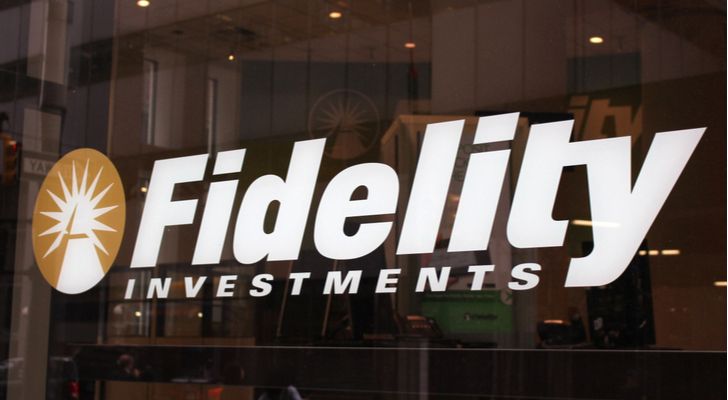Compared to rivals such as BlackRock’s (NYSE:BLK) iShares, Vanguard and others, Fidelity’s lineup of exchange-traded funds (ETFs) is small. Spanning broad market, factor-based strategies and sector funds, Fidelity offers 20 equity-based ETFs and five fixed income funds.
Even with its comparatively small lineup, Fidelity is one of the fastest-growing ETF issuers and the Boston-based fund giant has asserted itself as a low-cost leader. In fact, some Fidelity ETFs are among the cheapest on the market and the company is the only firm currently offering no-fee index funds. Investors can realize additional cost efficiencies by becoming Fidelity clients because Fidelity ETFs are available commission-free.
Those low fees and other cost synergies indicate some Fidelity ETFs are fine ideas for investors planning for or already in retirement. Here are some solid ideas among Fidelity ETFs for retirement planners and savers.
Fidelity Total Bond ETF (FBND)
Expense Ratio: 0.36%, or $36 annually per $10,000 invested
The Fidelity Total Bond ETF (NYSEARCA:FBND) is an example of a Fidelity ETF that has some room for its fee to be reduced. At 0.36% per year, FBND is on the pricier end of total bond market funds, but the fund has still managed to amass nearly $479 million in assets under management in just over four years of trading. The higher fee is because FBND is actively managed.
As an actively managed fund, FBND can overweight segments of the bond market that often receive just token exposure in traditional broad bond benchmarks. Additionally, this Fidelity ETF can take steps to react to rising or declining interest rates as well as boosting or reducing credit market exposure relative to the widely followed Bloomberg Barclays US Aggregate Bond Index. FBND’s 30-day SEC yield of 2.94% is just 10 basis points below that of the Bloomberg Barclays US Aggregate Bond Index.
Over a third of FBND’s holdings carry AAA ratings, but 17.40% have a high-yield designation, which is above-average compared to passive aggregate bond strategies. This Fidelity ETF is worth the cost of admission. Over the past three years, FBND beat the Bloomberg Barclays US Aggregate Bond Index by a 2-to-1 margin.
Fidelity Low Volatility Factor ETF (FDLO)
Expense Ratio: 0.29%
Investing in retirement does not mean eschewing equities altogether. However, retirement investors should reduce their equity risk profiles and low volatility strategies, such as the Fidelity Low Volatility Factor ETF (NYSEARCA:FDLO), help with that objective.
This Fidelity ETF tracks the Fidelity U.S. Low Volatility Factor Index. That benchmark “is designed to reflect the performance of stocks of large and mid-capitalization U.S. companies with lower volatility than the broader market,” according to Fidelity.
Many traditional low volatility funds are heavy on sectors such as consumer staples and utilities, but this Fidelity ETF takes a more adventurous approach while still delivering on the promise of reduced turbulence. FDLO allocates nearly 34% of its combined weight to the technology and financial services sectors but was still able to deliver annualized volatility that was nearly 200 basis points below the S&P 500 in 2018.
Fidelity Quality Factor ETF (FQAL)
Expense Ratio: 0.29%
Tapping the quality factor is a viable way for retirees to stay engaged with equities because quality stocks can be defensive and exhibit favorable volatility traits. The Fidelity Quality Factor ETF (NYSEARCA:FQAL) provides access to nearly 130 domestic stocks with favorable quality traits.
Like other factor-based strategies, quality funds should be sector agnostic, but some sectors are frequent residents in quality funds. In the case of this Fidelity ETF, technology and healthcare stocks combine for over a third of the fund’s weight. Eight of FQAL’s top 10 holdings are dividend payers and several of those names have steadily raised payouts over the years.
FQAL performed less poorly than the S&P 500 and the MSCI USA Sector Neutral Quality Index last year, while being less volatile than both indexes.
Fidelity Corporate Bond ETF (FCOR)
Expense Ratio: 0.36%
Income is a vital part of the retirement equation and while high-yield corporate bonds may be too risky for some retirees, higher quality corporates can be useful for many retirees. The Fidelity Corporate Bond ETF (NYSEARCA:FCOR) is actively managed and is one of the better income ideas among Fidelity ETFs for income-focused investors.
FCOR’s duration of 6.70 years indicates this is an intermediate-term fund. A 30-day SEC yield of 4.23% compares favorably with many of the passively managed alternatives in this category of bond funds. This Fidelity ETF holds almost 230 bonds with an 18% weight to corporate debt designated as junk bonds.
FCOR is a global fund, but about 72% of its holdings are domestic issuers. This Fidelity ETF is outperforming the largest investment-grade corporate bond ETF over the past 12 months.
Fidelity High Dividend ETF (FDVV)
Expense Ratio: 0.29%
This is one of the best Fidelity ETFs for investors seeking an above-average stream of equity income. The Fidelity High Dividend ETF (NYSEARCA:FDVV) proves as much with a trailing 12-month distribution yield of 4.04%, or almost double the dividend yield on the S&P 500.
Many high dividend strategies are heavily allocated to sectors, such as real estate and utilities, that are inversely correlated to Treasury yields, explaining why some high dividend ETFs slumped last year. While FDVV finished 2018 lower, the Fidelity ETF was significantly less bad than the two largest high-yield dividend ETFs in 2018.
FDVV devotes over 18% of its weight to tech stocks (high among this type of dividend fund) and just 0.55% to consumer staples names (below the category average). Last year’s steadiness was meaningful as this Fidelity ETF is the best-performing domestic large-cap high dividend ETF to start 2019.
As of this writing, Todd Shriber did not hold a position in any of the aforementioned securities.

